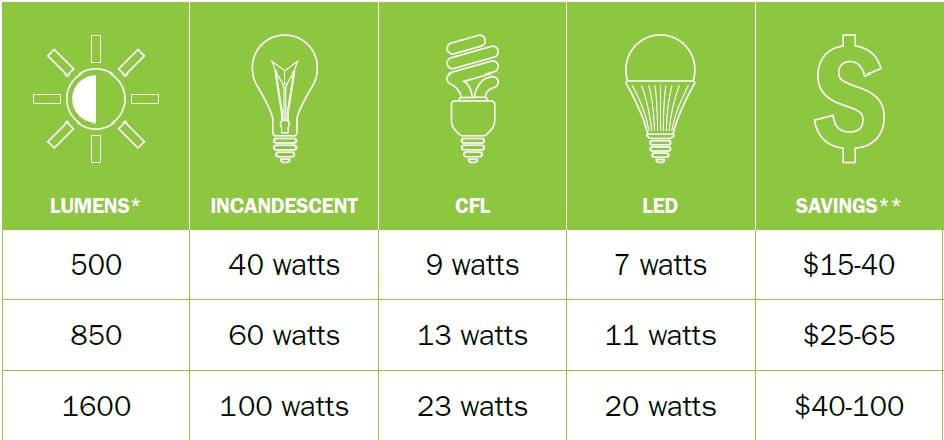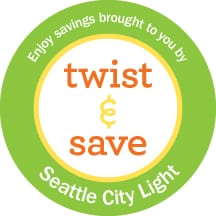 The common light bulb has been through a few makeovers in the last decade. If you’re thoroughly confused by the wildly varied shapes, sizes, colors and specifications in the lighting aisle, you’re not alone.
The common light bulb has been through a few makeovers in the last decade. If you’re thoroughly confused by the wildly varied shapes, sizes, colors and specifications in the lighting aisle, you’re not alone.
The common light bulb has been through a few makeovers in the last decade. If you’re thoroughly confused by the wildly varied shapes, sizes, colors and specifications in the lighting aisle, you’re not alone.
Seattle City Light staff routinely visit participating retailers in the Twist & Save discount program, which offers instant rebates on energy efficient lighting and appliances. On nearly every visit, we find customers staring at the shelves, scratching their heads, wearing facial expressions that reveal everything from utter frustration to outright giddiness.
The range and quality of light-emitting diode (LED) lighting products has exploded over the past several months, and promises to only get bigger and better. Several manufacturers have developed LED bulbs and fixtures with color temperature, dimming and diffusion properties that compare very favorably with their incandescent peers.
You might be tempted to try an LED in one of your lamps or fixtures, but how do you know which bulb to try? Here are some quick tips for selecting the right bulbs for your home.
You’ll want to consider three things before you head to the store:
- Lumen output: Most of us look for wattage to determine which bulb will provide the right amount of light; however, as the incandescent bulb becomes an artifact, wattage is no longer a reliable measure. Lumens, not watts, are the best indicators of light output. If you don’t know how many lumens you need, check the wattage on the bulb you’re replacing and consult the chart below to find an appropriate replacement.
- Color Temperature: Kelvin, or K, measures the color and warmth of a light bulb. LEDs and CFLs generally range from 2700 K (warm, yellow) to 3000 K (cool, blue).
- Socket location and type: For a typical home, we recommend a mixture of compact fluorescent light bulbs (CFLs) and LEDs for optimal efficiency, light quality and value. For conventional indoor sockets with no dimmer switches, CFLs provide excellent color temperature, quickly reach full brightness and cost a fraction of an equivalent LED. For outdoor sockets and fixtures on dimmer switches, we recommend LEDs.

What does this mean for the CFL?
CFLs, like LEDs, have come a long way since their debut to the market. CFLs that qualify for Twist & Save rebates are all Energy Star approved, provide excellent light quality offer outstanding value.
Where can I find bulbs that qualify for Twist & Save rebates?
Click here for a list of participating Twist & Save retailers, or call (206) 684-3800 to speak with one of our Energy Advisors. LEDs are selling fast, so you’ll want to contact stores in advance to check stock.
